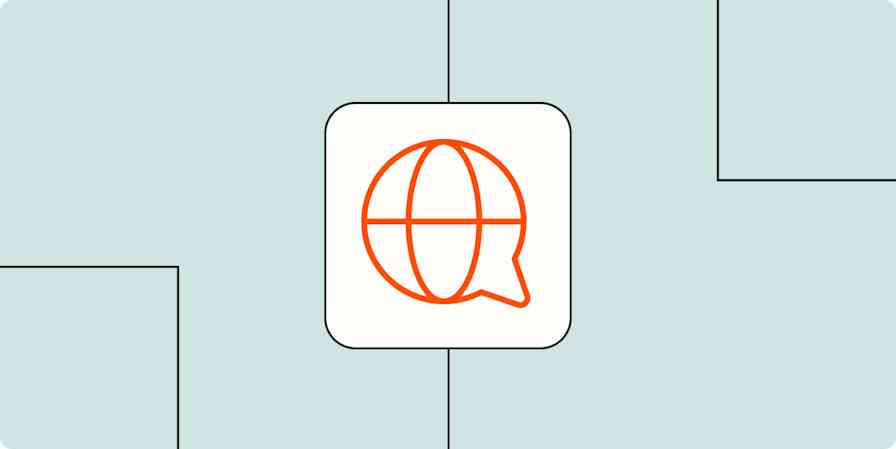"Find a job you love, and you will never work a day in your life" is nonsense. I love writing. That doesn't mean that writing isn't work. That doesn't mean I'm excited to start every day. And that doesn't mean I don't get burnt out.
And, honestly, if anything, loving your job means working more. It's harder to check out at 5:00 p.m. when you actually care, which makes it way too easy to just keep working. The quote should probably be "Find a job you love, and you'll work constantly, neglect your relationships, and also probably have poor hygiene." (Someone please stitch that on a pillow.)
It's easy to imagine that remote work will help with work-life balance because you can stop working whenever you want. But there's a flip side: you can start working whenever you want. It turns out people do that, a lot. Bloomberg recently reported that people who started working from home in March are working three hours more per day than before. This isn't new: Fast Company reported on this years before social distancing.
So: why do people work longer hours at home? I think it's the blurring of boundaries. It's harder to stop working at 5:00 p.m. when the place you work is also the place you live. There's also not really a clear end-of-the-work day because there's no commute home.
Whatever the reason, this is a problem. Work-life balance is hard, but we can all agree that working constantly isn't healthy. You need to separate the work day from the rest of your life, even if there's no external routine forcing that change, or you're going to burn out. I've been working from home for over a decade. I work for an entirely remote team of over 300 people. If there's one thing I can share with you about remote work, it's this: don't work more because you're working from home. Use the flexibility to bring more balance to your life, not less.
Don't replace your commute with more work
One of the first things new remote workers notice is time. That might not be the case right now for everyone—especially parents thrown into remote work for the first time when schools are shut down.
But there's no commute, which can easily mean a couple of extra hours every day. It is very tempting to pour this new time into work. Don't. You might think this was "work time" before. It wasn't. Your employers wouldn't have expected you to work longer days if you lived next door to the office, and they won't expect you to work longer days now.
Your employers wouldn't have expected you to work longer days if you lived next door to the office, and they won't expect you to work longer days now.
I've struggled with this over the years. I sometimes end up working constantly (especially now, when there's not a lot to do after work in any case). This almost always ends up meaning burnout, which means getting less done, which means feeling like I need to work more, which perpetuates the whole cycle.
Burnout is real, and it's really important to avoid it. Here's how to avoid burnout on a remote team and how to automate healthy work habits.
This is why I make sure to give myself a routine—to prevent work from consuming every little bit of my day. I start my day by outlining what I hope to accomplish, then figure out whether that's realistic considering my time constraints. I make sure to leave room in that schedule for breaks—a walk, lunch, some time for a call or texting friends in the afternoon. And I make sure I know when I need to stop working.
Of course, that's just one approach. My friend Janine, who's an editor here at Zapier, needed some external motivation, so she built a bot that tells her to stop working. Click the button to try it for yourself.
Take advantage of time-shifting
The good news: work-life balance doesn't have to mean recreating the nine-to-five work day. Remote work means you have flexibility, and you should absolutely use that flexibility. I, for example, went kayaking on a recent Friday morning. It was nice.

There was no one else on the river because it was a weekday. I got home around noon, ate lunch with my wife, then worked the afternoon. I "made up" for the missed time by doing some writing Saturday morning—just a couple of hours, really. None of my coworkers were online then, meaning I got more writing done than usual. Then I spent Saturday afternoon doing whatever I wanted because it was Saturday.
We've talked about how a flexible work-from-home schedule can make you more productive. I like to occasionally trade a weekday morning for a weekend one, so I can take advantage of less-crowded outdoor spaces. Some of my coworkers like to split their days into two four-hour blocks, with a four-hour break in the middle. This kind of flexibility is one of the best parts of working from home, and you should take advantage of it.
Make sure your coworkers are aware of when you are and aren't working, so they know when you'll be around to help. Then meet all of your obligations, and there's nothing to worry about.
Stop measuring productivity using time
Remote work is about trust. It's the only way it works.
Some managers feel like they need to micromanage remote employees, to keep track of when they are and aren't working, to ensure that everyone is putting in eight hours. It's a bad idea. Again: if anything, newly remote workers are putting in more hours, so any kind of tracking effort is largely a waste of time. But more than that, micromanaging tells employees that they're not trusted. That they won't actually do their jobs unless someone is watching them. That's a demoralizing message to send.
Our CEO, Wade Foster, wrote about how to build trust on a remote team, and this was one of his core points:
When we talk about trust in remote work, we're not talking about trusting that people are working from 9-5 or 8-7 or anything like that. We're trusting that they're going to accomplish what we've agreed they should accomplish.
Remote managers shouldn't judge their employees by how many hours they work—and you shouldn't judge your day that way either. It isn't ideal in an office setting, and it's totally arbitrary in a remote work setting.
Don't focus on hours—focus on what's getting done.
Wrap up your day when it's done
If you're the kind of person who tends to keep working out of some sense of guilt, consider designing a system that ends your work session. I, personally, wrap up every day by reviewing what I spent time on and what got done. I look at my completed tasks in my to-do list and review my time tracking app. Then I make a list of what I spent my time doing.
I almost always discover that, contrary to my gut feeling, I actually accomplished quite a bit. This brings a sense of closure to my day, which helps me actually stop working. That, in turn, means I'm a useful human person the following day instead of a burnt-out husk.
Give yourself that kind of closure. Then turn off all notifications, stop checking email, and give yourself time off—even if your desk is just a few steps away. Spend your evenings with your family, friends, and/or pet (which, let's be honest, you like better than your friends and family).
There will be more time for work tomorrow. Get to it then.
Related reading:
Photo by Victoria Heath on Unsplash





